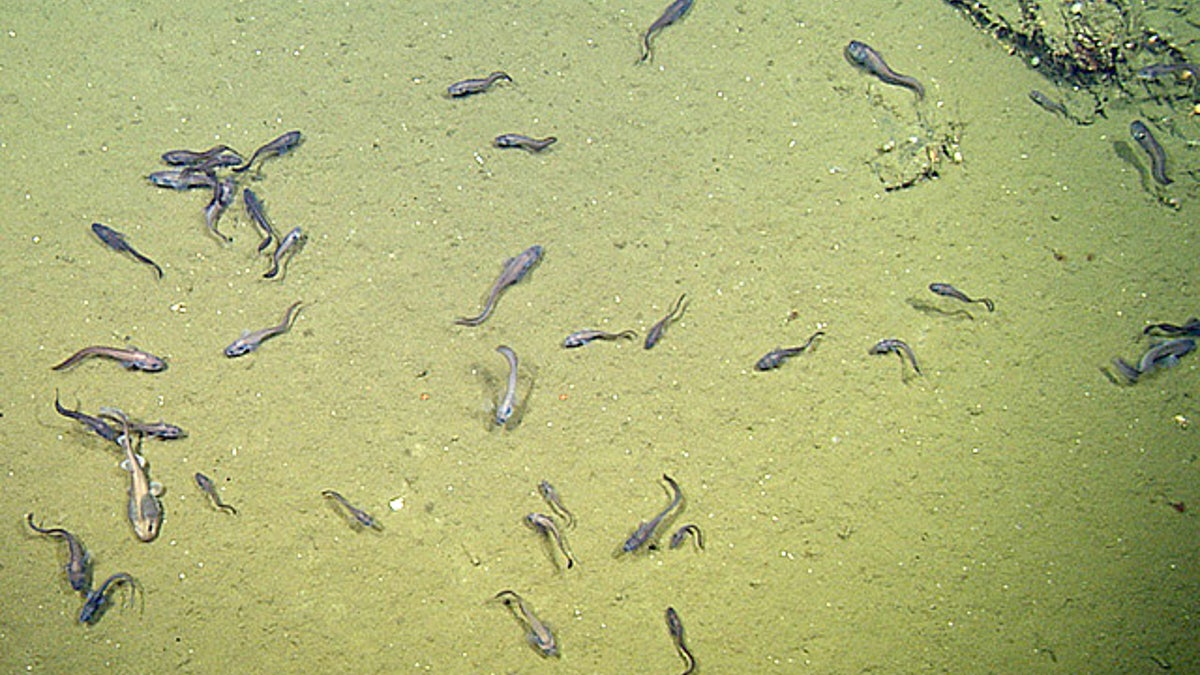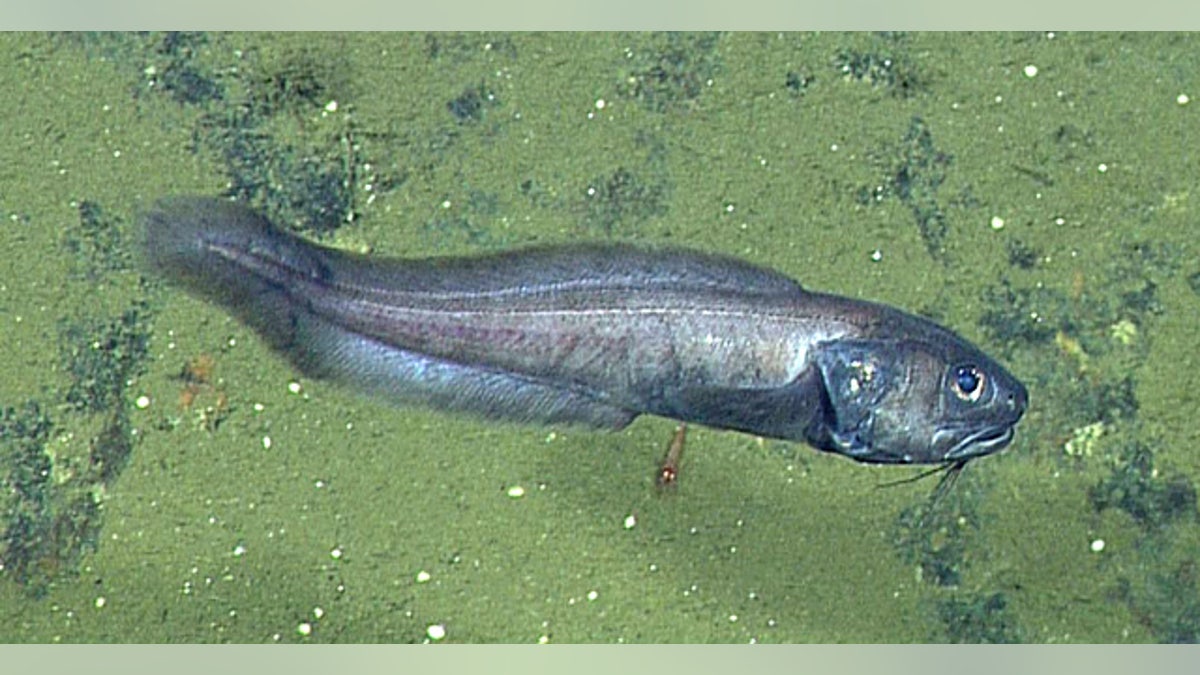
Catsharks and cusk eels were among the species of fish discovered in the depths of the Gulf of California. (2015 Monterey Bay Aquarium Research Institute)
Deep in the dark depths of the Gulf of California — where "virtually no oxygen" exists — live schools of fish that are thriving in an environment marine biologists would otherwise consider deadly for their kind.
Using a remote underwater robot in 2015, researchers with Scripps Institution of Oceanography in San Diego and the Monterey Bay Aquarium Research Institute explored extreme environments during several dives in an area called the Cerralvo Trough. And what they found came as a surprise: cusk eels, grenadiers, catsharks and lollipop sharks swarming the sea floor.
The researchers recently published their findings in the journal Ecology.
SCIENTISTS FIND 3 BIZARRE NEW CREATURES IN PITCH-BLACK PART OF PACIFIC OCEAN
“I could hardly believe my eyes,” Natalya Gallo, a graduate student at the Scripps Institution of Oceanography and part of the research group, wrote in a blog post. “We observed [fish] actively swimming around in areas where the oxygen concentration was less than one percent of typical surface oxygen concentrations."
Gallo said the low oxygen habitat should have excluded fish, but instead the schools were thriving — and there were "hundreds" of them.

Cusk eels were spotted thriving in the Cerralvo Trough. (2015 Monterey Bay Aquarium Research Institute)
The remote vehicle used instruments to measure various environmental factors at depths up to 4,500 feet, revealing oxygen levels in that part of the Gulf were "one-tenth to one-fortieth as low as those tolerated by other low-oxygen fish."
The data puzzled biologists, who compared the cusk eels and other species to "Olympic athletes" for their unique abilities to survive in such brutal conditions.
Scientists say the discovery could lead to answers regarding marine animals' capability of adapting to a changing "chemistry" of the ocean.
MYSTERIOUS SEA CREATURES DRAWS 'ALIEN' COMPARISONS WITH ITS SHARP TEETH, SPIKY SKIN
It's still unclear why or how these species are able to successfully create communities in this low oxygen area. It will likely take years of research to find more definitive answers. However, the Monterey Bay Aquarium Research Institute pointed out that cusk eels and catsharks have large heads and gills that may be useful when it comes absorbing and storing oxygen.
"We hope to go back to the Gulf soon to try and address some of these questions," Monterey Bay Aquarium Research Institute marine biologist Jim Barry, who was a part of the dive, said in an online statement.
